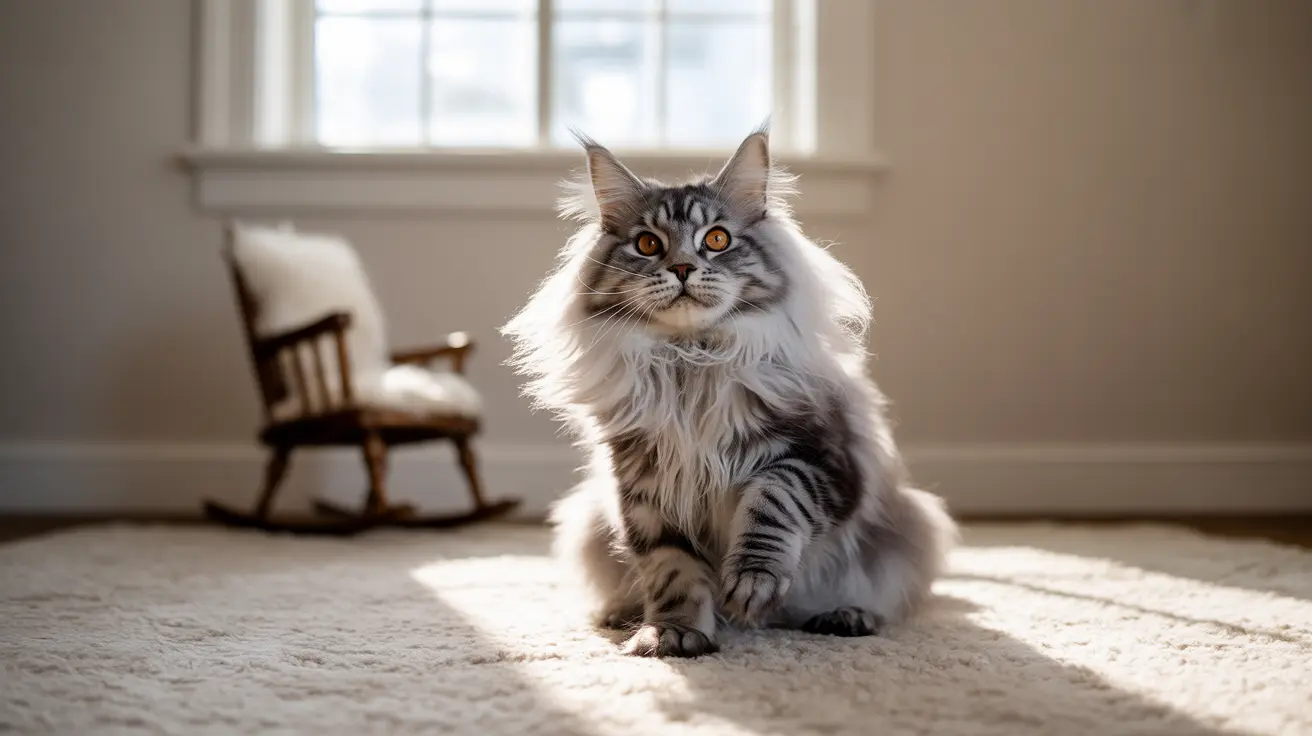If you've ever seen your cat suddenly transform their tail into what looks like a bottle brush, you're witnessing a fascinating feline behavior called piloerection. This natural response occurs when cats experience intense emotions, serving as both a communication tool and a defensive mechanism.
Understanding why cats' tails puff up can help you better interpret your pet's emotional state and respond appropriately to their needs. Let's explore the science behind this intriguing behavior and what it means for your feline friend.
The Science Behind Cat Tail Puffing
When a cat's tail puffs up, it's due to an automatic response controlled by the sympathetic nervous system. Small muscles called arrector pili contract around each hair follicle, causing the fur to stand on end. This process happens not just in the tail, but can also occur along the cat's back and sides.
This involuntary reaction is triggered by the release of adrenaline, which prepares the cat's body for either fighting or fleeing from a perceived threat. The biological purpose is to make the cat appear larger and more intimidating to potential predators or rivals.
Common Triggers for Tail Puffing
Fear and Startled Responses
The most common reason for a puffy tail is fear or surprise. When cats encounter unexpected stimuli like loud noises, sudden movements, or unfamiliar visitors, their immediate response often includes tail puffing combined with an arched back – the classic "Halloween cat" pose.
Aggression and Territory Defense
Cats may also puff their tails when feeling aggressive or territorial. This display often accompanies other warning signs like growling, hissing, or flattened ears, signaling to potential threats that they're ready to defend themselves if necessary.
Excitement and Play Behavior
Not all tail puffing indicates negative emotions. Particularly in kittens and younger cats, a slightly puffed tail might appear during playful episodes or moments of excitement. This is often accompanied by bouncing movements, playful pouncing, and generally relaxed body language.
When to Be Concerned
While occasional tail puffing is normal, frequent or prolonged episodes might indicate underlying issues:
- Chronic anxiety or stress
- Environmental stressors
- Potential health problems
- Social conflicts with other pets
If your cat's tail remains puffed up for extended periods or the behavior occurs frequently without obvious triggers, consult your veterinarian to rule out any medical concerns.
How to Respond to a Puffed Tail
Your response should depend on the context and your cat's overall body language:
- During play: Continue if your cat seems relaxed and engaged
- When scared: Give them space and remove stressors if possible
- If aggressive: Back away slowly and avoid direct eye contact
- For chronic cases: Consider environmental modifications and stress reduction techniques
Frequently Asked Questions
Why does my cat puff up its tail and arch its back like a "Halloween cat"?
This defensive posture is designed to make your cat appear larger and more intimidating when they feel threatened or startled. The combination of an arched back and puffed tail is an instinctive response to potential dangers.
How can I tell if my cat's puffy tail means they are scared, angry, or just playing?
Look at other body language cues: relaxed ears and bouncy movements suggest play, while flattened ears and growling indicate fear or aggression. Context is also important – consider what's happening in the environment when the behavior occurs.
What biological mechanism causes a cat's tail to puff up suddenly?
The arrector pili muscles around each hair follicle contract in response to adrenaline release, causing the fur to stand on end. This process, called piloerection, is controlled by the sympathetic nervous system.
Should I be worried if my cat's tail stays puffed up for a long time or often?
Persistent or frequent tail puffing might indicate chronic stress, anxiety, or medical issues. If this behavior occurs regularly without clear triggers, consult your veterinarian.
How can I safely respond when my cat puffs up its tail during play or when stressed?
During play, continue if your cat seems relaxed. If stressed, give them space and remove potential stressors. Never force interaction with a frightened or aggressive cat showing a puffed tail.
Understanding Your Cat Better
Tail puffing is just one of many ways cats communicate their emotional state. By learning to read this body language cue alongside other behavioral signals, you can better understand and respond to your cat's needs, ultimately strengthening your bond with your feline companion.






